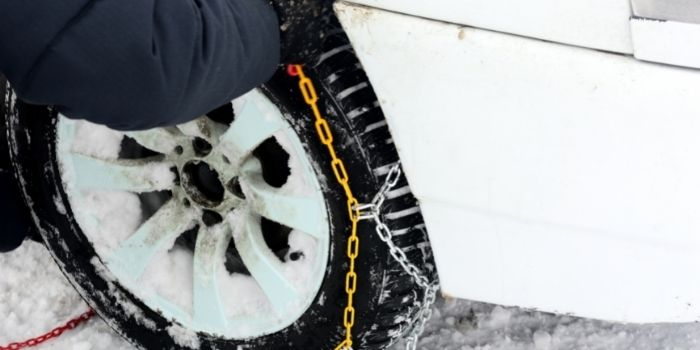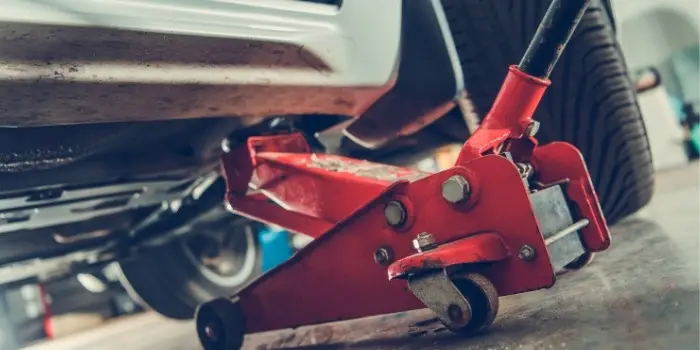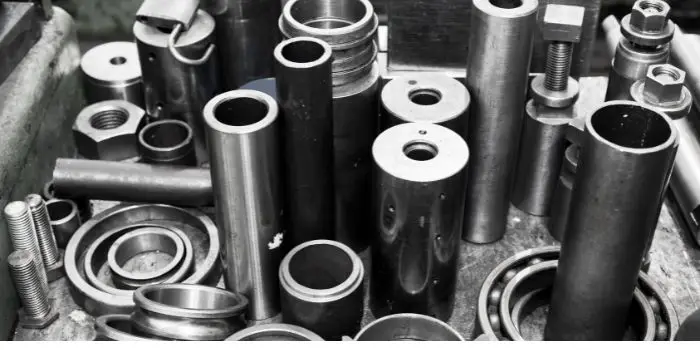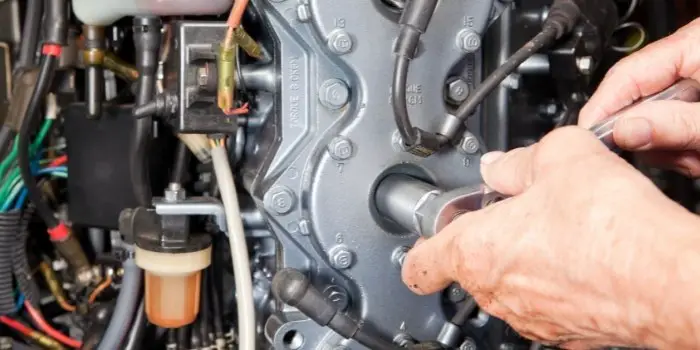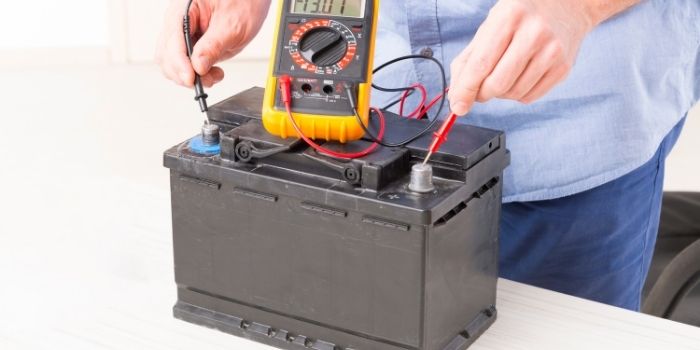
When it comes to batteries for your car, there are two main types: a dry cell and a wet cell. But which one is the best option?
There are pros and cons to both dry and wet cell batteries when it comes to powering your car.
Here’s a look at the differences between these two types of batteries and how they can impact your driving experience.
Table of Contents
What is a Dry Battery?
Dry batteries are also called maintenance-free batteries.
They are sealed, so you can’t add water to them, they don’t require any maintenance i.e. you can simply install and forget about them.
Pros:
The main advantage of dry batteries is that they’re very low-maintenance.
You don’t have to add water or check the level, and there’s no risk of leakage or battery acid damage.
This makes them a good choice for people who don’t have time to take care of their car batteries regularly.
Cons:
However, dry batteries do have some drawbacks as well. They generally have a lower capacity so they may not be able to power your car for as long.
They also tend to be more expensive, so you’ll need to weigh up the cost before making a decision.
What is a Wet Cell Car Battery?
Wet cell batteries are the traditional type of battery, and they’re the most common type used in cars.
They have removable caps so you can add water or check the level, and they require regular maintenance to keep them running efficiently.
Pros:
The main advantage of wet cell batteries is that they tend to have a higher capacity, meaning they can last longer and provide more power for your car.
They’re also generally cheaper, making them a more cost-effective option for many drivers.
Cons:
However, wet cell batteries do have some drawbacks.
They can be more prone to leakage and damage from battery acid, so they require regular maintenance to keep them running properly.
They can also emit gases from the electrolyte which can be harmful if inhaled.
This also makes them a less ideal choice for people who don’t have time to take care of their car regularly.
What’s the Difference Between Dry and Wet Batteries?
The key difference between dry and wet cell batteries is in their construction.
Dry cells are sealed, maintenance-free units that are generally less expensive and easier to use than wet cells.
Whereas wet cells have removable caps so you can add water or check the level, and they require regular upkeep to keep them running well.
When comparing both, dry batteries are the most common type, and they’re typically used in small devices like flashlights and remote control cars.
Wet batteries are larger and more powerful, making them ideal for applications like car starters and power tools.
Dry batteries are convenient because they’re easy to store and don’t require any maintenance.
However, they tend to be less powerful than wet batteries, so they may not be suitable for high-drain devices and cars.
Additionally, dry batteries can leak if they’re damaged, which can cause corrosion and other problems.
Wet batteries are more expensive than dry batteries, but they offer a number of benefits. They’re much more powerful, so they’re perfect for high-drain devices.
Additionally, wet batteries are easier to recharge, so you won’t have to replace them as often.
The main downside of wet batteries is that they require regular maintenance, such as adding water to the cells.
Can you use a wet battery in cold temperatures?
It’s generally recommended that you avoid using wet batteries in extremely cold temperatures, as this can negatively impact their performance and lifespan.
If you live in a cold climate, consider using a dry battery instead that does not come with a liquid electrolyte.
How Do You Tell if a Battery is Sealed or Flooded?
Sealed batteries have several advantages over flooded batteries.
They’re more resistant to leaks and spills, and they don’t require as much maintenance.
Additionally, sealed batteries typically have a longer lifespan than flooded batteries so they are a great choice for anyone looking for a high-quality battery that requires minimal care and maintenance.
The easiest way to tell if a battery is sealed or flooded is to look at the cells. If the cells are covered, then it’s a sealed battery.
If the cells are exposed, then it’s a flooded battery.
Additionally, sealed batteries usually have a higher capacity than flooded batteries.
What is AGM Battery – Is it Better Than a Standard Battery?
AGM batteries are a type of sealed battery that’s becoming increasingly popular in cars.
AGM stands for “Absorbed Glass Mat,” and these batteries are designed to be more efficient and longer-lasting than standard batteries.
AGM batteries have several advantages over standard batteries. They’re completely sealed, so there’s no risk of leakage or spillage.
Additionally, AGM batteries can handle more discharge/recharge cycles than standard batteries. This means they’ll last longer and provide more power over time.
The main downside of AGM batteries is that they’re more expensive than standard batteries.
However, many people feel that the extra cost is worth it for the improved performance and longevity.
So, is an AGM battery better than a standard battery?
It depends on your needs and preferences. If you’re looking for a longer-lasting, more powerful battery, then an AGM battery may be the way to go.
FAQs
Does the dry battery need charging?
Dry batteries typically don’t need to be charged as often as wet batteries.
However, if you notice that your battery isn’t holding a charge as well as it used to, then it’s a good idea to give it a boost.
To charge a dry battery, simply connect it to a charger and let it charge for a few hours.
How do you charge a wet battery?
To charge a wet battery, you’ll need to add water to the cells and then connect it to a charger. Make sure you use distilled water to avoid damaging the battery.
After charging, wet batteries typically last longer than dry batteries, but they still need to be regularly maintained.
With proper care and maintenance, a wet battery can last several years or even decades.
However, if it’s not properly cared for, its lifespan will be shorter.
Are wet and flooded batteries the same?
No, wet and flooded batteries are not the same.
A flooded battery has exposed cells that need to be regularly filled with water, while a wet battery is completely sealed, so it doesn’t require any regular maintenance or refilling.
However, both types of batteries can be used in cars and other vehicles. So if you’re looking for a battery for your vehicle, either type will work.
Conclusion
There are many things to take into account when deciding which type of car battery is best for your needs.
Two of the most important factors are whether you want a dry or wet cell battery.
It really depends on your individual needs and preferences. If you’re looking for a low-maintenance option, then a dry cell battery may be the best choice.
However, if you need a powerful battery that will last longer, then a wet cell battery may be a better option.
Ultimately, it’s up to you to decide which type of battery is best for your car.

Based in Orem (Utah) John Paterson graduated from Utah Valley University and has begun writing in 2009. He has a large wealth of experience in writing articles related to cars, automotive repair, wheels, cleaning/maintenance, and much more. He has also written instructional articles in a similar niche for a few online publications as well. Currently, he works as a mechanic in his personal garage shop where he loves serving his countrymen from his heart.

